Why we love print
Eight graphic designers reveal what inspired them to launch a magazine, how it fits around their day job and the challenges they have overcome to keep publishing
Perhaps surprisingly, given our obsession with all things digital, the independent print magazine industry currently appears to be enjoying something of a revival. Take a look on the shelves of any independent bookstore today and you’ll find a huge number of beautifully printed magazines that are lovingly bought and collected by a faithful, and it seems ever-increasing, new wave of magazine enthusiasts.
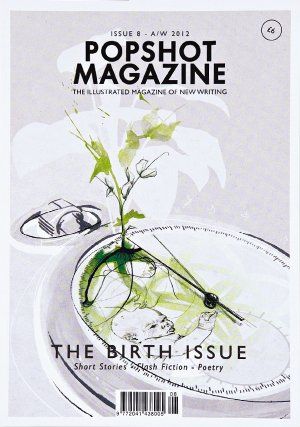
Events like Printout, held in London every two months, and the newly launched independent magazine conference Mag Is In, held in Turin, Italy this year, are attended by a growing number of publishers and readers alike who are intent on keeping the independent magazine publishing industry alive. And although pinning down figures can be tricky, Steve Watson, founder of independent UK-based magazine subscription service Stack, has seen subscriber numbers more than double in the last year.
So what’s driving this renewed interest? Is it some kind of backlash against the increasing number of digitally published magazines, and the way we view visual inspiration in general online? Or in fact do the two actually complement one another?
Jeremy Leslie, editor of magCulture, believes it’s down to a variety of interlinking factors: “There’s always been a healthy number of small independents, but they seem more visible today and the quality is higher. I think there are several reasons for this: firstly, if you’re into making a magazine, chances are that you’ve already established an editorial tone of voice via a blog or other digital channel,” he explains.
“Secondly, an individual has access to largely the same production hardware and software as a large publisher; all you need is a decent laptop and internet connection and you’re off. Thirdly, that same internet connection helps that person promote, distribute and sell their magazine globally.”
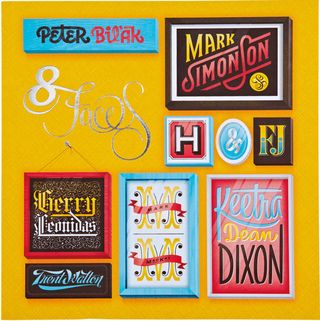
Given such fertile ground for producing independent print magazines, one group of publishers is fast emerging as the driving force behind their increasing popularity: graphic designers. It seems that graphic designers and other creatives are using print magazine publishing as a way to further extend their creative reach and, for some, as a way to move their online projects offline. As Elliot Jay Stocks, founder of the typography-focused 8 Faces magazine, explains: “Being a web designer and growing tired of my work disappearing offline, I wanted to make something real that would last and sit on a bookshelf for years to come. The first issue was written and designed entirely by me, but over time we’ve slowly grown into a much larger team of contributors covering editorial, design and logistics.”
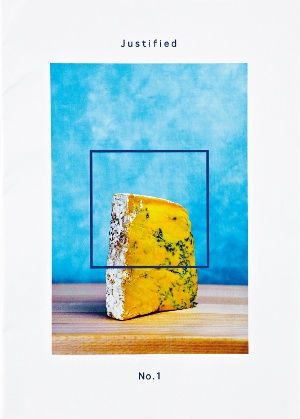
Similarly Justified magazine, which started life as a blog showcasing the work of student and graduate designers, photographers and architects, is now published quarterly by its founder Joshua Ogden. “The web presence we have is great,” he says. “It’s a mass of visual imagery from all over the place – the problem is that as more and more people submit work, the previous work moves further down the endless cyberspace scroll. Seeing this happen is what gave me the idea of trying to capture what the blog has and put it into a printed format that could be kept, owned and even collected,” he continues.
Offscreen magazine, launched earlier this year by Kai Brach, uses the print environment to explore the life and work of people who work solely online creating websites and making apps. “As the magazine title suggests, Offscreen explores what happens off the screen,” he explains. “A physical product that can be touched, collected and read anywhere is, we think, a logical way to present this type of information. We encourage you to put your iPad down, grab a cup of coffee and enjoy a high-quality read in the old-fashioned way.”
As well as satisfying their craving to produce a printed, tactile object, for many of the founders of these ‘by creatives, for creatives’ magazines, launching their own publication is often about promoting the work of fellow designers or illustrators. Berlin-based title Fukt is one such magazine. Dedicated to contemporary drawing practice and illustration, it was set up in 2000 by Bjrn Hegardt and Nina Hemmingsson during their studies. At the time there were few, if any, publications like it.
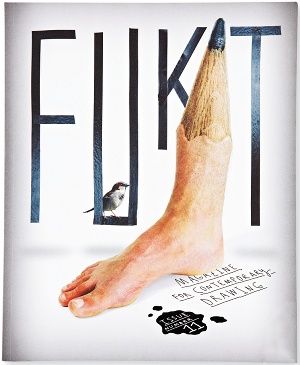
“When we launched Fukt, we didn’t know any magazines out there that covered drawing and illustration in the way we wanted to, so we created one,” Hegardt explains. “We were also looking for new ways to present drawing and illustration, not just in a gallery setting, and the medium of print had the appeal we were looking for.”
More recently, during the London Design Festival in 2010, product designer Polly Glass and graphic designer Chris Harrison launched Wrap magazine. Wrap aims to provide a platform showcasing and promoting the work of those in the fields of illustration, design and creative culture, as Glass explains: “There are so many talented designers and illustrators out there who, for whatever reason, don’t get the chance to show their work, so we make Wrap to give them a platform.”
Quarterly published Ammo magazine focuses solely on illustration. Designer David Hughes launched the title, and describes it as “more of a small art book” than a magazine. It’s printed in a landscape format at an unusually small A6 size, using a weighty 160gsm stock. It features the work of both established and up-and-coming artists with the aim of celebrating the best in illustration from around the world.
“Like many creatives I collect printed output, and so when I launched Ammo I wanted to create something that others would deem worthy of collecting,” he says. “I guess I wanted to create something that I would want to buy myself.”

Similarly for designer Jacob Denno, co-founder of illustrated literary magazine Popshot, publishing a magazine was about creating an object that would be read and kept. “Where’s the fun in having a magazine that sits in Acrobat or in someone’s internet history? I wanted Popshot to be in people’s hands so it could be taken on trains and planes, and be left on coffee tables.”
Cathy Olmedillas, mother, designer and founding editor of children’s pop culture magazine Anorak, agrees: “I love the fact that we live in a digital age, it’s enabled some amazing things – but personally I get more benefits out of reading a book or a magazine. Somehow it feels like a more focused, intimate and uninterrupted experience.”
For all of these independent magazine editors, launching and continuing to publish their printed titles isn’t always easy. Financing them can be a challenge, as can promotion and distribution, and finding a good quality, reliable printer can be harder than you might think. Launching a magazine also involves donning many hats: from commissioning writing, to finding content, to working with new stockists and chasing invoices; there’s often a lot to juggle.
“There are lots of challenges when setting up an independent publication,” explains Glass. “You have to create original content, find funding, print your magazine and work with the right shops and distributors to sell and promote your magazine. We’ve learnt a lot during the last couple of years that we’ve been producing Wrap and we now have a far more structured approach to the business.”
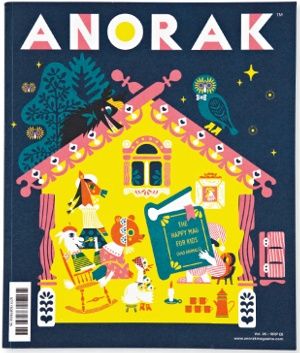
Time management and balancing a day job with running a magazine can also be challenging. Ammo editor Hughes, who chooses not to feature any advertising or sponsorship, works full-time as a digital designer using his evenings and weekends to focus on Ammo. The money he makes from sales is used to fund the making of the next issue.
Similarly Justified’s editor Ogden, who is currently in his final year of university, runs his magazine together with fellow design students William Whiting and Jasper van den Bosch. With studying taking up the majority of their time, work on the magazine is currently carried out during the evening and at weekends. And Fukt’s editor Hegardt produces just one issue a year as he, too, works full time.
Something that can change this, though, is deciding to take on sponsorship or advertising. Ammo magazine doesn’t feature ads as Hughes feels that their inclusion could, in some way, spoil his publication. However, as he points out: “I’ve noticed a lot of magazines heading down the sponsorship route and think this is a great alternative to traditional advertising. It’s something I’d consider if it gave me more freedom in terms of print finishes, larger print runs and more frequent releases without compromising on the overall aesthetic of my magazine.”
This is exactly the route that Brach has taken with Offscreen magazine. “I include eight sponsors per issue, which helps cover the cost of production, but instead of running traditional adverts – which I find disruptive and often plain ugly – I present my sponsors at the centre of the magazine as an elegant showcase,” he explains. “That way the reading experience feels less interrupted but the sponsors still get the attention they deserve. I don’t shy away from telling the readers the obvious, which is that we depend on these companies to survive, but to be honest I think that because we take a different approach to advertising, people notice it, and I believe it actually makes the ads far more effective.”
Get the Creative Bloq Newsletter
Daily design news, reviews, how-tos and more, as picked by the editors.
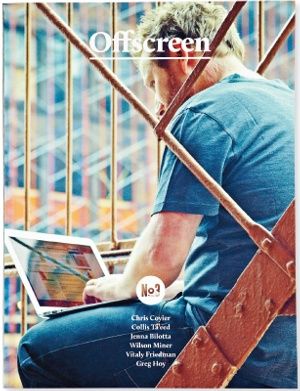
Bi-annually published 8 Faces magazine runs a five-tier advertising and partnership scheme. Three tiers are based around ad placements and two are based around more prominent logo placements. Again however, the emphasis is on being tasteful and elegant. “Our tier model works extremely well for us,” explains Stocks. “The ads and logo placements in 8 Faces might be prominent, but they’re always tasteful and of course having them in there at all means that the magazine is profitable before a single issue is sold. The money that’s then generated from the sales of each issue effectively acts as my salary, covering the time I put into making each issue happen.”
In recent years, social media has also proved crucial in the continued success of independently published print magazines. It gives the makers a chance to reach a global audience at the touch of a button, and can help greatly with creating buzz around their titles and generating new sponsorship, if that’s the route they’re taking.
When Olmedillas launched Anorak in 2006, social networking was only just beginning to catch on. Today, however, it’s vital to all businesses. “One of the biggest milestones in Anorak’s history was discovering what social media could do from a business perspective and I’ve since used social media to build awareness of Anorak, get press for the magazine and find new shops to stock it,” she explains. “There is now an Anorak app and we recently launched Anorak’s Happy TV through iTunes.”
Ogden cites social media as being the main driving force behind the successful launch this year of Justified magazine. “Getting Justified off the ground is all thanks to social media,” he explains. “Start-up companies can benefit really well from it, as it’s essentially free publicity: you can see instantly if you have a genuine interest in your product. Then once you’re up and running things like promotion via Twitter, being featured on blogs and so on can be really beneficial in creating buzz.”
No matter the digital influence, the makers of these beautifully designed and printed magazines have chosen to create a printed publication because of a love of print. Something about the tactile nature of a magazine that they can hold in their hands remains appealing.

“Reading magazines on a tablet, not going to a book shop – these things are dehumanising us,” he adds. “The backlash to the digital age is becoming more profound, and independent publishers and bookshops are really starting to celebrate print.”
Proof of this comes from Marc Valli, co-founder of Magma Books, one of the UK’s leading independent bookshops. “Over the last five years we’ve noticed that magazine sales have remained steady and healthy,” he says.
“We’ve also noticed that the magazine market is changing profoundly. In a way it’s becoming more book-like, which is, perhaps, the key to its success. A lot of magazines have become bi-annual or quarterly, making a point of being less about news and more about a certain vision or idea,” Valli reflects.
“While the internet might be very good at giving us information, it’s not necessarily very good at selecting and trimming down that mass of information and conveying it in a coherent form. Magazines are more suited to do that and I hope this continues to be the case for some time.”
Discover 50 stunning examples of print ads at our sister site, Creative Bloq.

Thank you for reading 5 articles this month* Join now for unlimited access
Enjoy your first month for just £1 / $1 / €1
*Read 5 free articles per month without a subscription

Join now for unlimited access
Try first month for just £1 / $1 / €1
The Creative Bloq team is made up of a group of design fans, and has changed and evolved since Creative Bloq began back in 2012. The current website team consists of eight full-time members of staff: Editor Georgia Coggan, Deputy Editor Rosie Hilder, Ecommerce Editor Beren Neale, Senior News Editor Daniel Piper, Editor, Digital Art and 3D Ian Dean, Tech Reviews Editor Erlingur Einarsson and Ecommerce Writer Beth Nicholls and Staff Writer Natalie Fear, as well as a roster of freelancers from around the world. The 3D World and ImagineFX magazine teams also pitch in, ensuring that content from 3D World and ImagineFX is represented on Creative Bloq.
